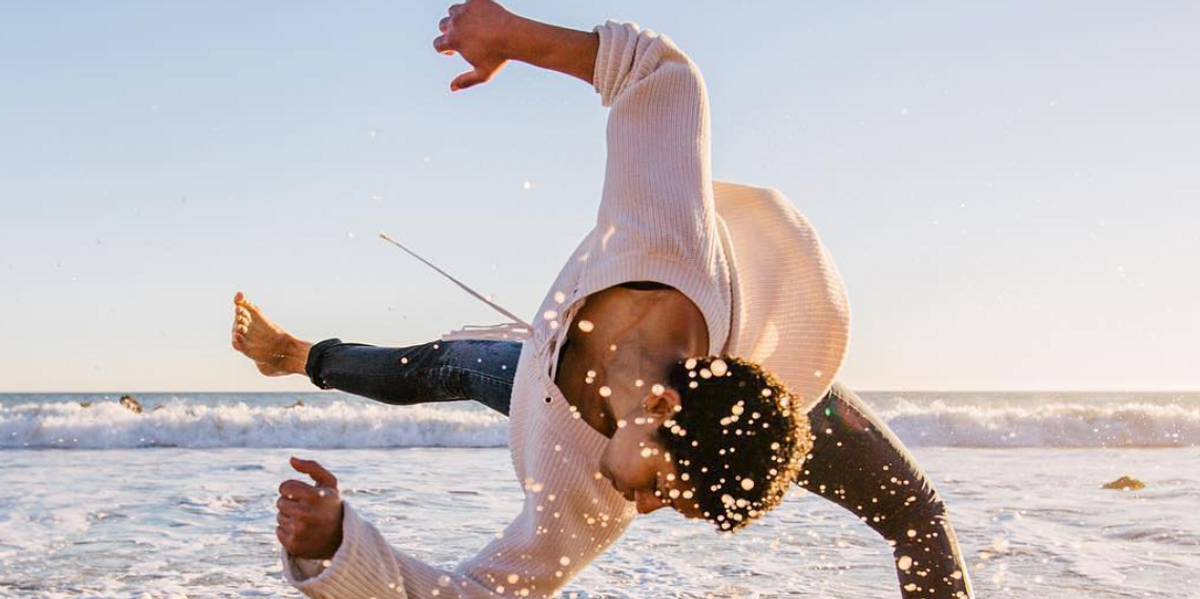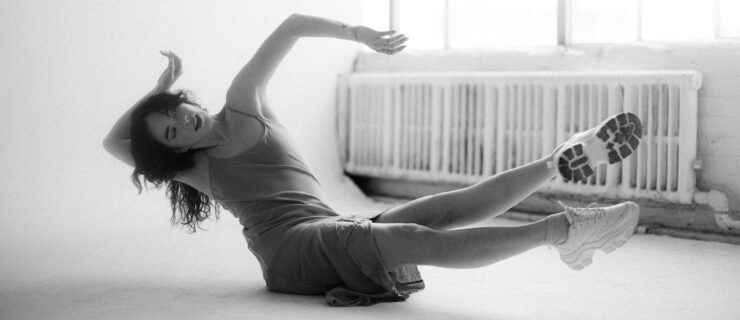Joy Isabella Brown On Staying Inspired and the Benefits of a Non-Traditional Dance Background
When Joy Isabella Brown moved to L.A. at 15, she was unfamiliar with dance—but she did discover martial arts tricking. After a few years of honing that movement practice, she met choreographer Jacob Jonas, and was quickly invited to a rehearsal with his company. Though she still describes her experience as an “uphill battle,” it’s allowed her to explore other movement categories and has ultimately led her to a career as an artist. Dance Spirit spoke to Brown about her background in tricking, what inspires her, and how to grow in your movement practice. —Natalie Zisa
Dance Spirit: You learned about tricking years before you started dancing. How would you say tricking has informed your dance work and vice versa?
Joy Isabella Brown: I think the hardest part in the beginning, but the part I’m most thankful for now, was learning how to sequence movement. I was always good at explosive moment because of my background, but learning how to link things together became really crucial. It also led me to a better understanding of how to create more visually appealing shapes.
Being part of Jacob Jonas The Company has allowed me to explore different types of movement. I was exposed to breakdance, ballet, and contemporary vocabularies. That led me to see what I could incorporate into my own style and what didn’t necessarily fit on my body. I like having a bit of everything, and I appreciate not having a traditional dance background.
DS: How have you been able to create work and stay inspired during the pandemic and the political unrest in the U.S.? Physically, mentally, and financially?
JIB: I think the inspiration for making work at the beginning of the pandemic was to use what we had, which at the time was an iPhone. And living with Mike (Tyus), I was able to social distance with someone who’s a dancer. But for me, my background of tricking kicked in because trickers are used to training outdoors, in nature, and by themselves. So, my training regimen didn’t change a lot when it started and it’s made me really grateful for where I came from.
A big part of why we create is to respond to the collective energy the world seems to be sharing right now. The values that we hold dear to us and try to capture on camera are universal. People might not be able to connect to dance, but they can understand love, freedom, and being connected with other people. I think people responded to it so heavily because the art itself was combatting the fear that surrounded the world at the time.
DS: Who are the artists (dancers, musicians, etc.…) that inspire you?
JIB: Mike Tyus is one of my biggest inspirations. He’s shown me a lot in terms of combining dance, acrobatics, and storytelling. Jacob Jonas and Jill Wilson are also some of my big inspirations, as well as some of my closest friends and collaborators. These days I like a lot of Francis and the Lights, Nathaniel Rateliff, Amber Mark. A lot of the people I follow are versatile; multidisciplinary artists and photographers. I think I’m more inspired by non-dancers than dancers.
DS: You don’t identify as a dancer or a gymnast, but a mover. Do you have any advice for dancers who feel stuck in how they identify?
JIB: I think the only way to grow as a mover is to allow yourself to be very uncomfortable, as with any area of life. To fully explore what your potential is. Learning to explore dance coming from a very regimented acrobatic background was very uncomfortable and it led to a lot of uncertainties and insecurities when I started, but that’s what allowed me to grow as a mover. Keep putting yourself out there and in situations that cause you to grow.
DS: You’re still at an early stage in your career. What are some of your goals?
JIB: I want to keep doing what I’m doing. It’s interesting because I’ve gotten to a place where the work that I’m doing I love so much and I just want to do more of it on a larger scale. Capture movers on camera, connect with people, choreograph a full-length work at some point, whether it’s on my body or someone else’s. And a feature film would be a goal as well, but that’s down the line. This whole year has brought about so much clarity for things that I didn’t know I wanted to do.




